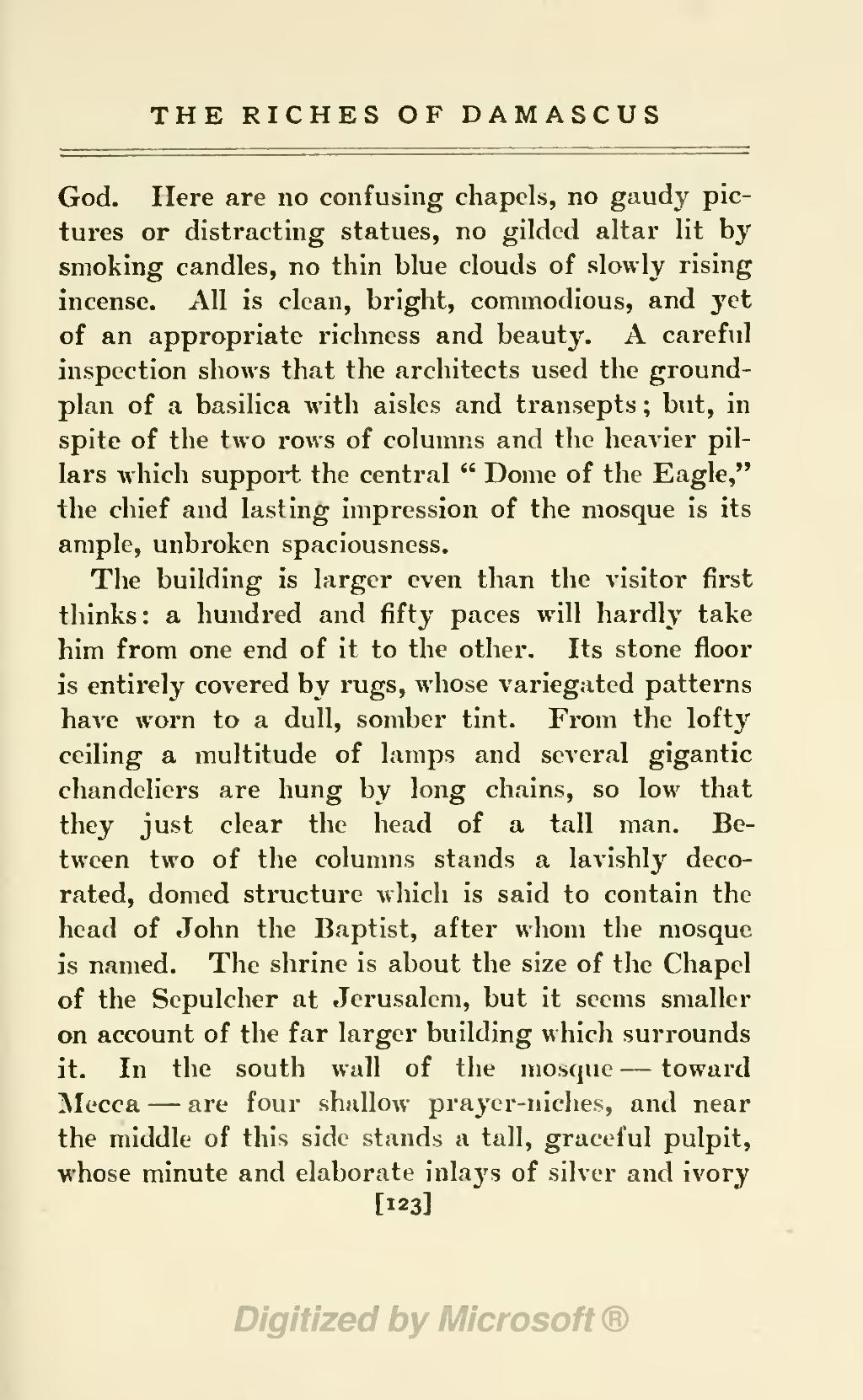THE RICHES OF DAMASCUS
God. Here are no confusing chapels, no gaudy pictures or distracting statues, no gilded altar lit by smoking candles, no thin blue clouds of slowly rising incense. All is clean, bright, commodious, and yet of an appropriate richness and beauty. A careful inspection shows that the architects used the ground-plan of a basilica with aisles and transepts; but, in spite of the two rows of columns and the heavier pillars which support the central "Dome of the Eagle," the chief and lasting impression of the mosque is its ample, unbroken spaciousness.
The building is larger even than the visitor first thinks: a hundred and fifty paces will hardly take him from one end of it to the other. Its stone floor is entirely covered by rugs, whose variegated patterns have worn to a dull, somber tint. From the lofty ceiling a multitude of lamps and several gigantic chandeliers are hung by long chains, so low that they just clear the head of a tall man. Between two of the columns stands a lavishly decorated, domed structure which is said to contain the head of John the Baptist, after whom the mosque is named. The shrine is about the size of the Chapel of the Sepulcher at Jerusalem, but it seems smaller on account of the far larger building which surrounds it. In the south wall of the mosque—toward Mecca—are four shallow prayer-niches, and near the middle of this side stands a tall, graceful pulpit, whose minute and elaborate inlays of silver and ivory
[ 123 ]
